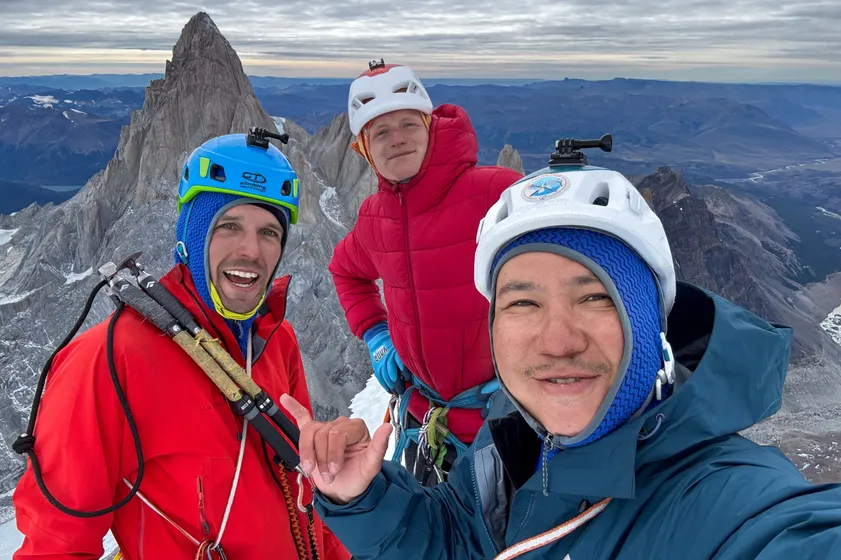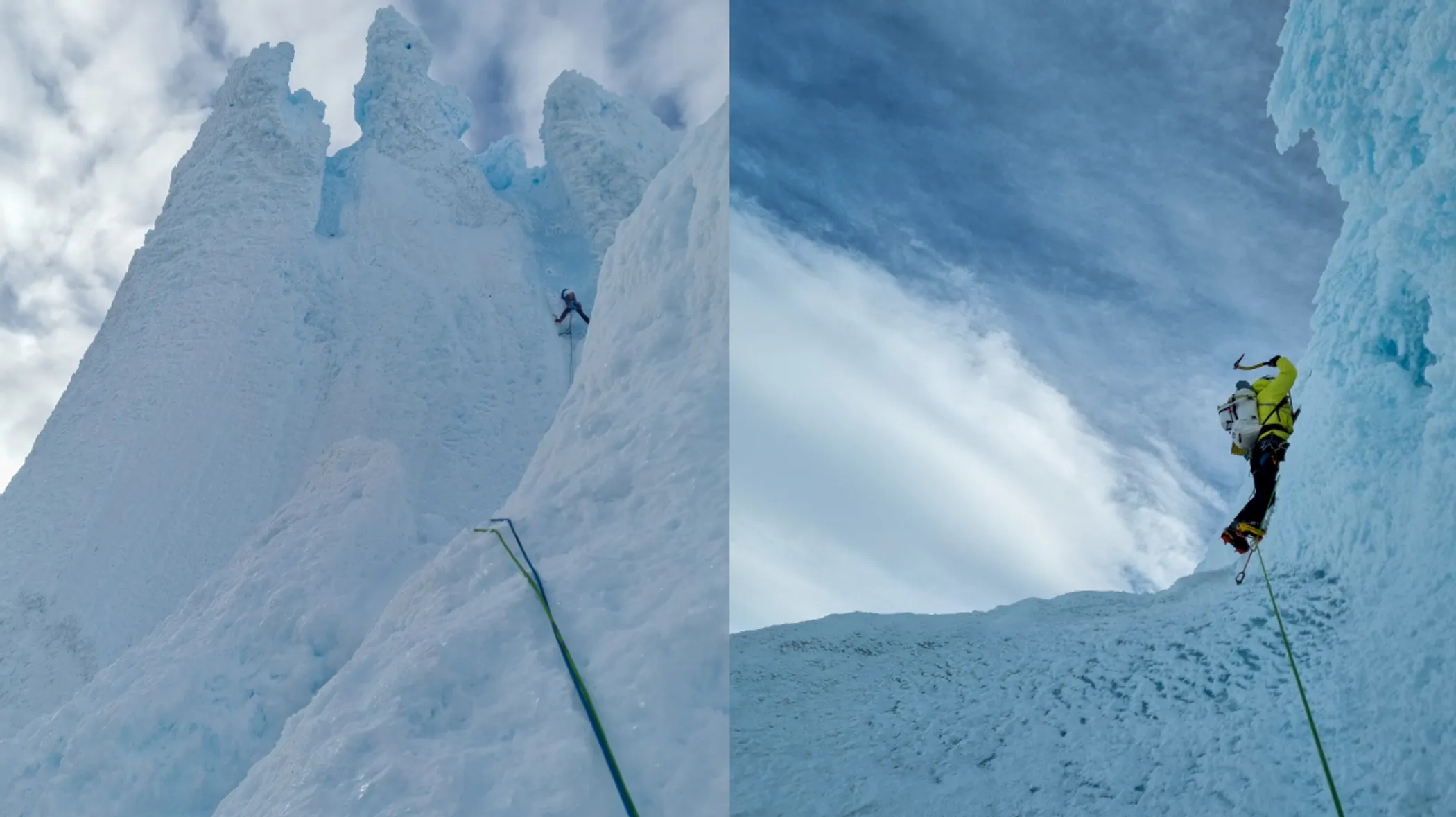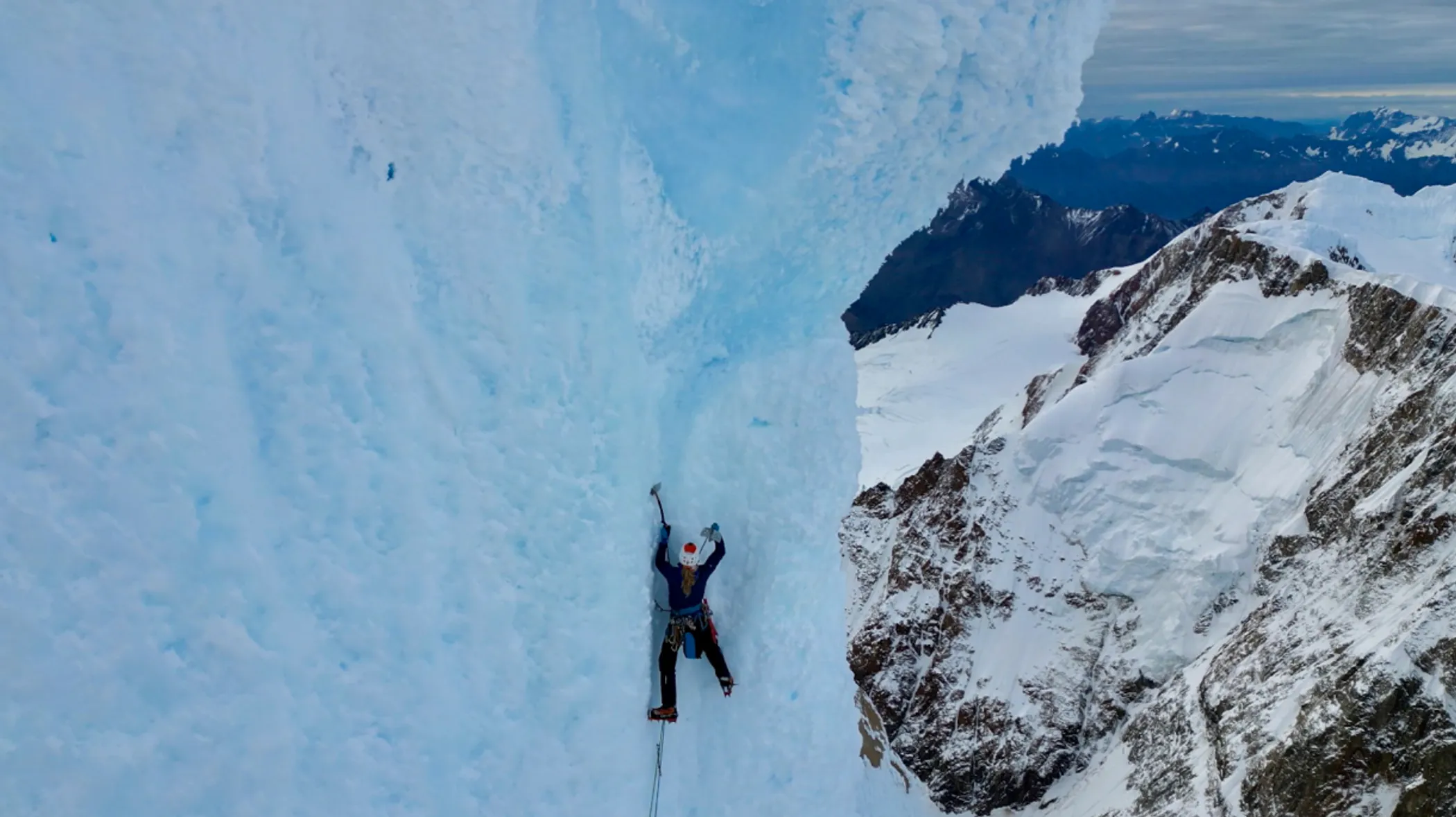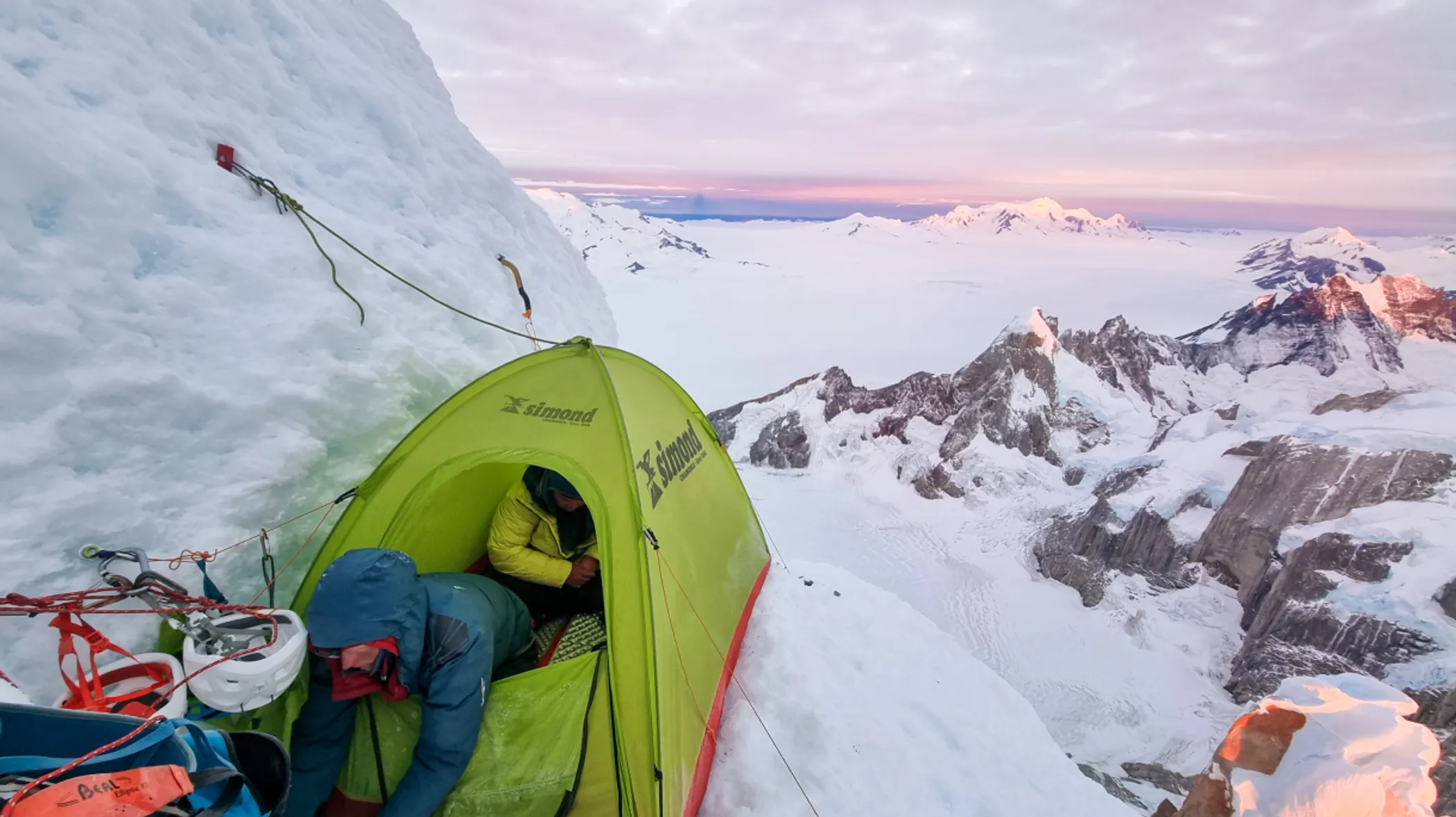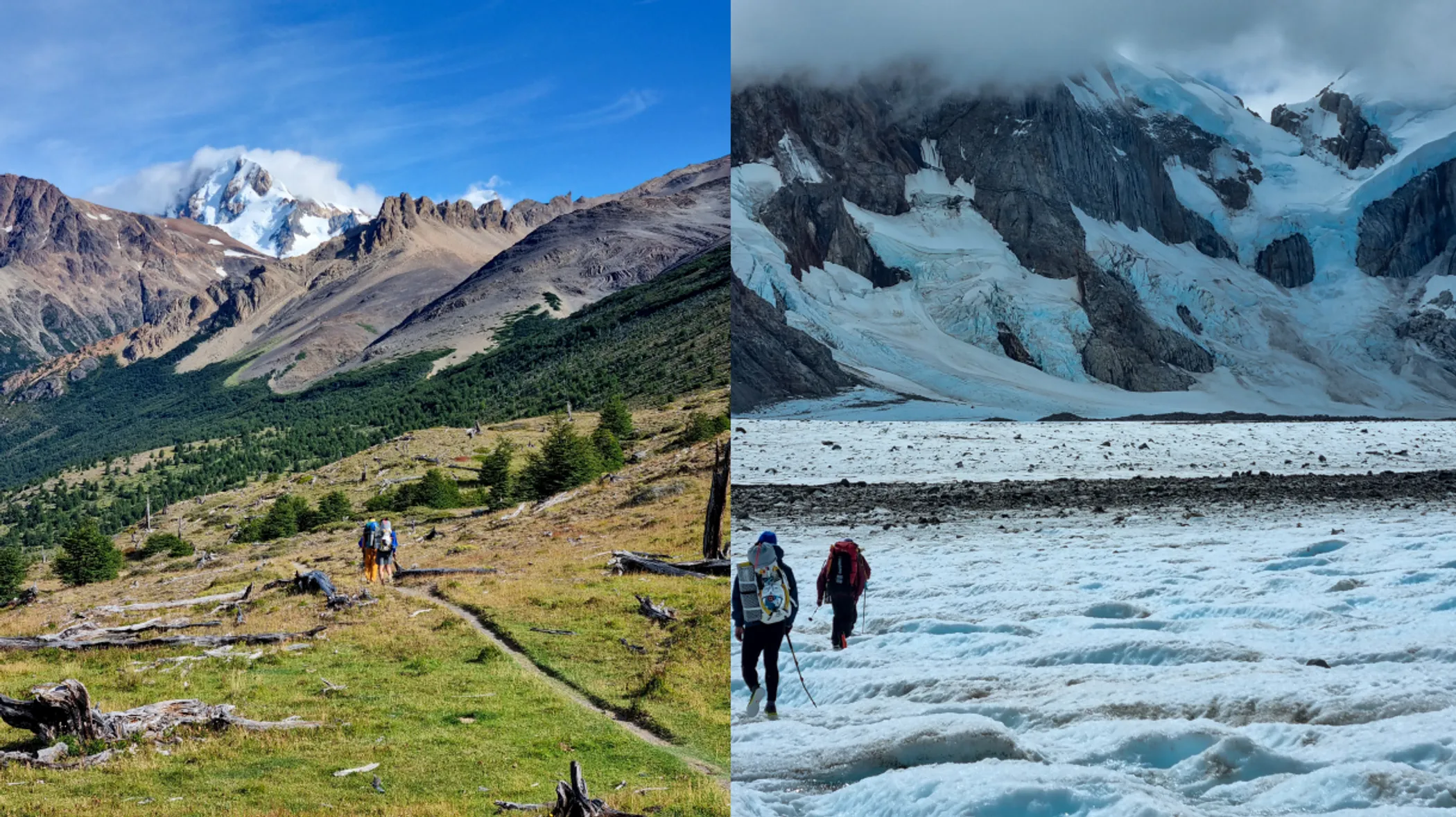Against a blue backdrop rises a sharp image – a mountain group of four. Three peaks and an apex. The latter is called Cerro Torre. Crowned with rime ice, it’s famous not for its height, reaching 3,128 meters, but for its foul weather. Winds here reach 160 km/h. The adversaries to anyone who dares to tackle the slopes of Southern Patagonian Ice Field. Many have attempted to ascend Cerro Torre. Some succeeded, while the claims of others are disputed. On February 1, the international team of four mountaineers set foot near the climbing site.
Omar Aserbekov, head of the expedition (Kazakhstan)
Grigoriy Chshukin, captain of the team (Kazakhstan)
Marius Gružauskas, mountaineer (Lithuania)
Denis Lukyanchuk, cameraman (Kazakhstan)
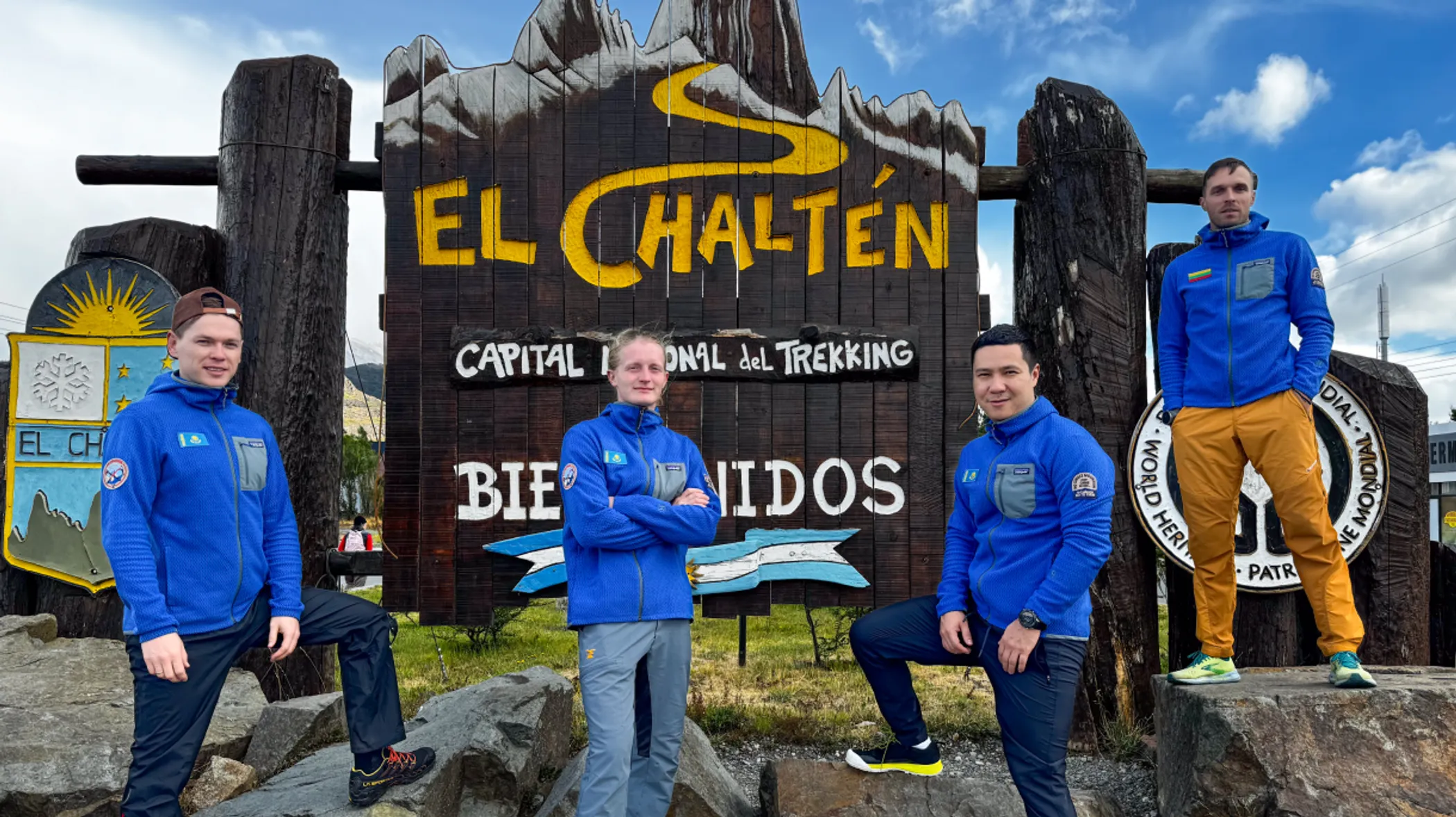
The month-long stay in Patagonia saw their ascents to the granite spires of Mojon Rojo (2,170 m), Aguja Poincenot (3,002 m), and Aguja Media Luna (2,197 m). Last week went to the big preparation. A sixty-kilometer walk across the passes and glaciers with the sights fixed on Cerro Torre, followed by an arduous 1,700-meter vertical climb along the so-called Ragni Route. Multiple hours were spent on each pitch, climbing points the length of a rope, all to traverse icy and twisted rock faces. The team had to climb rime mushrooms, overhanging bulbous accretions sculpted by winds. One so infamous that it has earned a name – El Elmo, the Helmet. On February 24, reports QazMonitor, the mountaineers reached the summit.
Standing atop, they took memos, photos and videos, having bested the challenging Grade VI climb on the American National Climbing Classification System.
On the 23rd we got up at 3 a.m. We simul climbed to the Col de la Esperanza placing ice screws for protection. It was quiet and warm while we were climbing, but as soon as we reached the Col, it became very cold, and a strong wind started blowing. I caught myself thinking that summer alpinism should look a little different.
As Grigoriy Chshukin recalls in his notes, the last day before the summit involved El Elmo, the first ice crux. The air was filled with a morning glow as the mountaineers found themselves facing a 45-meter vertical wall of ice. Fortunately, the conditions favored the brave, and with just three easy pitches, they ascended into the steep gully. Their luck hadn't run out yet, as that gully had a lot of hanging rime mushrooms above their heads. The summit was still a long way ahead.
On their way up, the mountaineers hoped to find an ice tunnel; instead, they saw a half-tube made of snow. A slippery, dangerous ascent.
I dug out a piece of ice in the lower part of the half-pipe and put a long ice screw in it. Then things became interesting. My tools kept sinking into the snow even with wings, but they still somehow held me. I drove my feet deep into the snow of the half-pipe, but they kept sliding down along with a pile of snow and ice. This was probably the scariest pitch of the route.
The peak of Cerro Torre features three large snowy outgrowths. Called mushrooms, they serve as steps. The first mushroom is behind the team, and the ascent to the second revealed only sharp ice ridges. The third is in sight, but the team has to rest. First things first — they have to dig a ledge on an ice slope. An hour later, the mountaineers toiled to have for themselves an unusual opportunity. To lay on their backs. Chshukin recalls, “As we sat down for a late dinner, I felt pain in my forearms and hands. Finally, we laid down head to toe and set the alarm for 6 a.m.” At 10:25 a.m., Cerro Torre was bested.
The idea to travel all the way to South America, where strong climbers from all over the world come to test their skills, came to the team last summer.
Initially, we didn't set any serious goals. The main objective was just to gain new experience. In the end, many things came our way, and we had a very productive time. We managed to tackle some good, unique routes. Most importantly, we had the opportunity to ascend the ‘highlight’, the Ragni Route to the top of Cerro Torre, becoming the first Kazakhs to reach the summit.
One of the members, Denis Lukyanchuk, served as the group's cameraman. He halted his climb sometime before reaching the peak to survey the area with a drone and capture his team’s ascent. “There were moments when I genuinely felt fear for them,” admitted Lukyanchuk, as the team had to make decisions on the fly. Marius Gružauskas recalled, “On one of the dangerous sections of the route, a rock hit me in the leg. I had to make a choice. Go down or continue climbing to the top. I decided to climb and not let the team down. [In the end] I became the first Lithuanian climber who managed to reach the summit.”
All the captured footage has Lukyanchuk hard at work to convert those dazzling shots into a documentary. A testament to the team’s abilities and a hook to capture the attention of people in Kazakhstan and abroad. To popularize mountaineering and share its dangers and grace with the whole world. “This project is very important to us, and we plan to continue it in the future. We are already discussing the possibility of a new expedition,” added Lukyanchuk. Right now, the team sets its sights on peaks in New Zealand, Pakistan, and the US.
This feature is based on the press release provided by NOTO Agency. QazMonitor edited and adapted some of the diary entries with the permission of Grigoriy Chshukin. Full entries are available on the mountaineer’s Instagram page.
